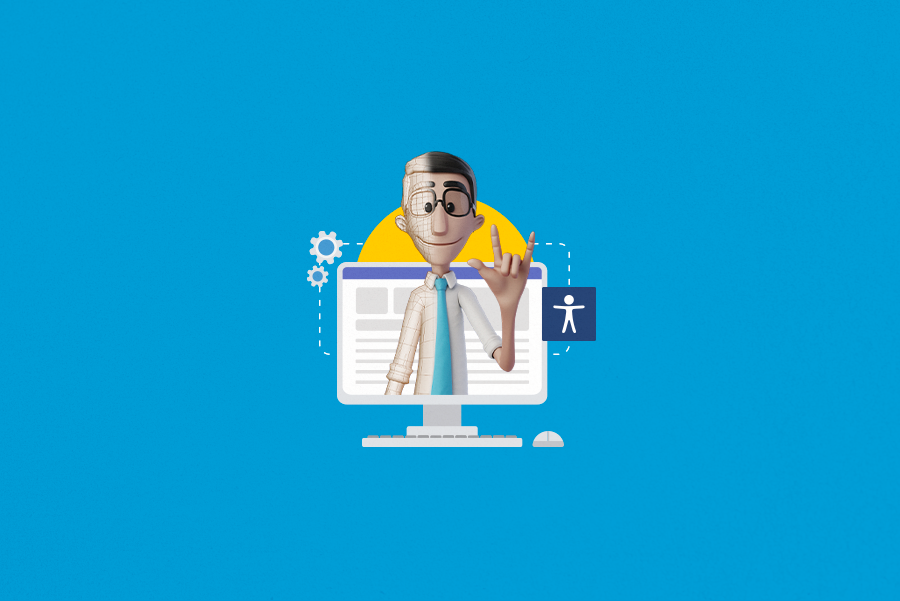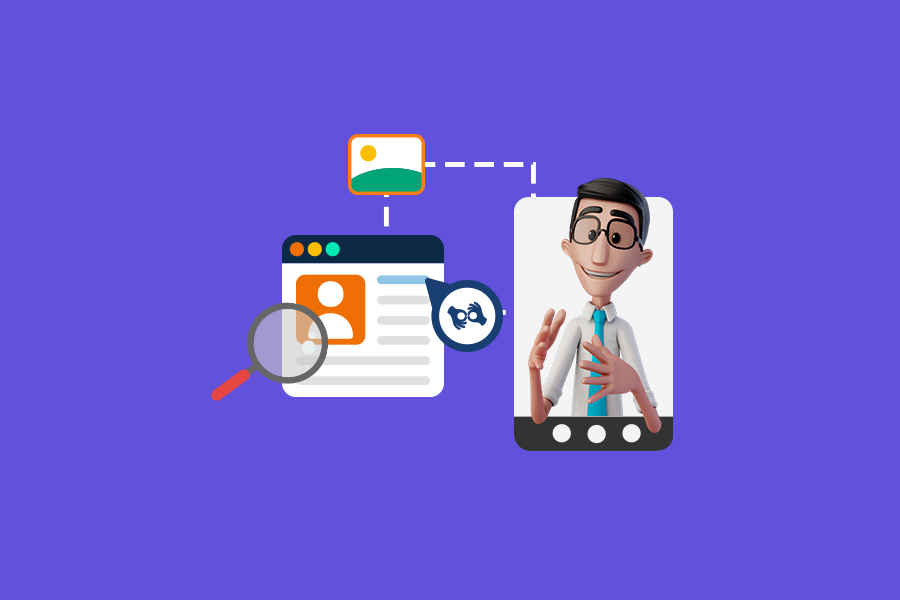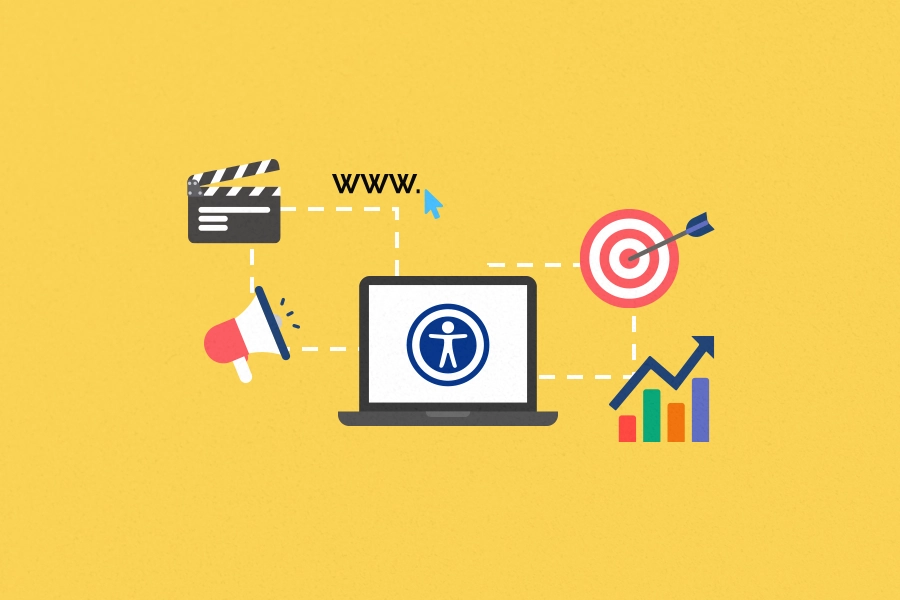
Impacts of Artificial Intelligence (AI) on Web Accessibility

Web accessibility is a topic that has become increasingly important in our society today. Given that the internet has become an essential aspect of the daily lives of billions worldwide, it is crucial to address the needs of the 16% of the global population with some form of disability.
To give you some context, web accessibility refers to the practice of making internet resources accessible to all people, regardless of their physical or cognitive abilities. This is where Artificial Intelligence (AI) comes in! It has emerged as a powerful tool to enhance web accessibility, providing numerous benefits for people with disabilities. Of course, like any new technology, we still have to deal with some challenges it presents.
Want to better understand the impacts of Artificial Intelligence on web accessibility? Then keep reading this article!
What is Artificial Intelligence (AI)?
To understand how Artificial Intelligence is impacting web accessibility, it is important to have a basic understanding of what AI is. Artificial Intelligence is a field of computer science that focuses on developing systems and machines capable of performing tasks that typically rely on human intelligence, such as learning, reasoning, and problem-solving.
AI encompasses a wide range of technologies, including machine learning, natural language processing, and computer vision. The good news is that all these functions can be applied in the realm of accessibility and used to promote social good! Amazing, is it not?
How is Artificial Intelligence used in web accessibility?
Artificial Intelligence plays a key role in improving web accessibility in various ways. Here are some of the most important ways AI is being used:
Multimedia content captioning
Captioning multimedia content, such as videos and podcasts, is essential to ensure that people with hearing disabilities or deafness can access information effectively. AI is used to automatically generate accurate and synchronized captions based on the audio present in the content, making it accessible to a much broader audience.
Speech recognition
For people with physical disabilities, reduced mobility, or those who cannot type, speech recognition technology is a great ally. AI enables users to control devices and navigate the web using voice commands alone, making the online experience much more accessible.
Object detection and image recognition
In this case, AI is used to describe images and graphics for people with visual disabilities. Computer vision algorithms can identify objects in images and transform this information into text or audio, allowing users to better understand the visual content of the web.
Automatic Sign Language translation
This AI technology enables the automatic translation of text content into Sign Languages video information. It is particularly relevant for deaf individuals who have Sign Languages as their native and primary forms of communication, such as American Sign Language (ASL) in America.
Improved browsing experience
Did you know that AI-powered virtual assistants and chatbots can enhance our web browsing experience? They can provide guidance and personalized support for people with disabilities, helping them find relevant information and navigate websites more effectively. Furthermore, websites with accessible structures and content offer a better experience for all individuals, with or without disabilities, resulting in excellent search engine performance.
Examples of Artificial Intelligence in accessibility
To fully understand the impact of AI on web accessibility, it is worth considering concrete examples of its implementation. There are numerous accessibility tools out there, so let’s learn more about some of them!
Be My Eyes
The Be My Eyes app uses smartphone cameras to connect volunteer helpers with individuals who have visual disabilities. Volunteers can offer real-time visual assistance, such as reading labels and aiding in navigation, thanks to AI!
Apple’s VoiceOver
VoiceOver is an Apple accessibility feature that uses AI to verbally describe what is on the screen of an iOS device. This makes Apple devices more accessible to individuals with visual or cognitive disabilities.
YouTube’s automatic captioning
YouTube uses AI to generate automatic captions for videos, making content more accessible to deaf individuals or those with hearing disabilities. There are also several other assistive features available on Android technologies that are worth checking out.
Hand Talk Plugin and Hand Talk App
Since 2012, Hand Talk has been using Artificial Intelligence and machine learning in our solutions, the Hand Talk Plugin, and the Hand Talk App. With it and the help of our incredible team of linguistic experts, including Sign Language interpreters and deaf individuals, we can provide automatic translations of text and voice into Brazilian Sign Language (Libras) and American Sign Language (ASL).
What are the main impacts of Artificial Intelligence on web accessibility?
The integration of Artificial Intelligence into web accessibility has brought about a series of both positive and negative impacts. Let’s explore these impacts in detail, check it out:
Positive impacts of AI on web accessibility
Greater accessibility
AI has made the web more accessible than ever for people with disabilities. It removes barriers, allowing these individuals to navigate, consume content, and participate in online society more effectively.
Increased independence and autonomy
AI empowers people with disabilities, enabling them to perform online tasks independently. Consequently, it encourages the promotion of inclusion and autonomy!
Negative impacts of AI on web accessibility
Accuracy challenges
Although AI has advanced considerably, there are still challenges in ensuring that captions, descriptions, translations, and voice recognition are accurate enough to meet the needs of all individuals. Errors in captioning or descriptions can hinder content comprehension.
Excessive dependence
Excessive dependence on AI to improve web accessibility can result in neglecting other essential practices of accessible design. It is important to remember that AI is not a one-size-fits-all solution for all our accessibility problems but rather a useful tool to assist us.
Conclusion
Have you noticed that Artificial Intelligence plays a crucial role in improving web accessibility? Despite still being in development, it has the potential to make the web more inclusive and accessible to all individuals. In the future, its continuous evolution has the potential to make the online environment even more accessible and inclusive, promoting a truly egalitarian space.
Do you want to learn more about web accessibility? Then be sure to check out the Hand Talk Blog!


